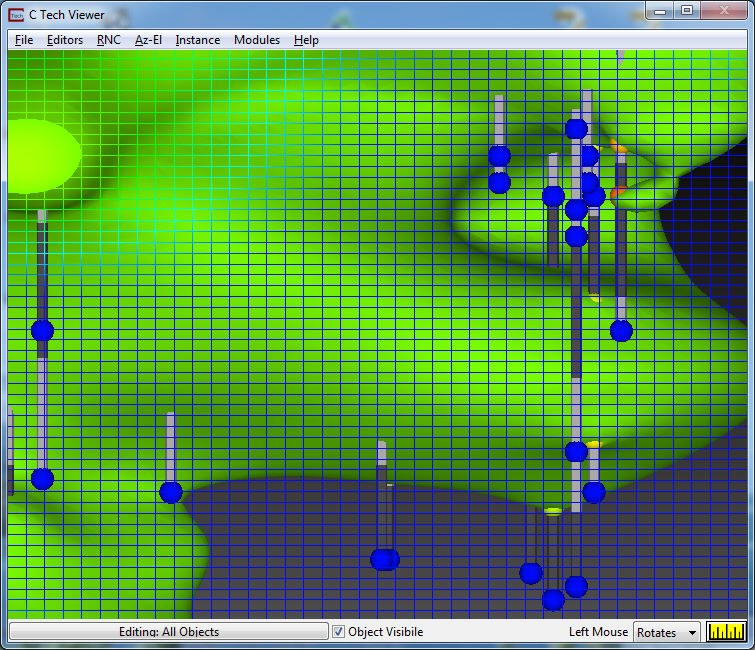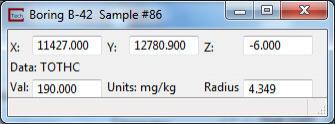
Now let's address an important topic, honoring of measured data. By honoring we mean that the predicted concentrations should precisely match the actual data. This is only possible if grid nodes actually match the coordinates of the input (measured) data. Otherwise, we want our predicted distribution to approach our actual data as nodes approach measured sample locations.
This concept of honoring the data seems obvious and hardly worth mentioning. However historically, kriging used a variogram parameter called a nugget. This concept originated with using kriging for predicting ore bodies (which contain randomly dispersed nuggets). If a nugget is used in the variogram (it often seems to make it easier to fit the variogram to the data), the predicted concentrations will not honor the measured data.
First, set the MaxEdgeAngle on external_edges to 0, and adjust your view in Azimuth & Elevation by setting the Scale to 2.6, Elevation to 0.0 degrees and choose 180 degree Azimuth. It may seem strange that the picture below which may suggest that EVS does not honor the data. Note that there is an orange sphere with a concentration of 190.0 mg/kg which is partially outside of the 5.0 mg/kg plume.

To see the properties of this sample, hold down the Alt key and click on the orange sphere with your left mouse button. This should pop-up the window below in the upper right corner of your screen.

Because this is an important topic, we wanted to show an example which illustrates the effects of inadequate resolution. We set the Max Edge Angle to zero so that the grid would be obvious.
Though the entire spheres are not surrounded by the plume, the centers of the spheres with concentrations higher than 5 are definitely inside. Adapative Gridding insures this will be true.
For this dataset, the gradients in concentration are often high.
EVS's kriging routines will always honor the measured data value. It will calculate a geostatistically defensible value at all other locations. However, if a plume does not seem to adequately honor the measured data increasing resolution may resolve the problem. Remember, when dealing with 3-D kriging, the resolution must be considered in all three dimensions X, Y, and Z. Also, be aware that "honoring" your data means that the kriged estimate at a location will match the data at that same location. If you make a grid that is much larger than your dataset, you should expect far beyond the data, you may not be satisfied with the estimate. Kriging will project trends and far from the data will tend towards the average.
Krig_2D and Krig_3D have adaptive gridding on as the default.
Adaptive gridding assures that we will have grid nodes at all data points and reduces (almost eliminates) the need for excessively high resolutions.
Before proceeding to the next topic adjust the Max Edge Angle back to 60 degrees and set the view to Elevation 12 degrees, Scale 0.7 and Azimuth 210.
© 1994-2018 ctech.com